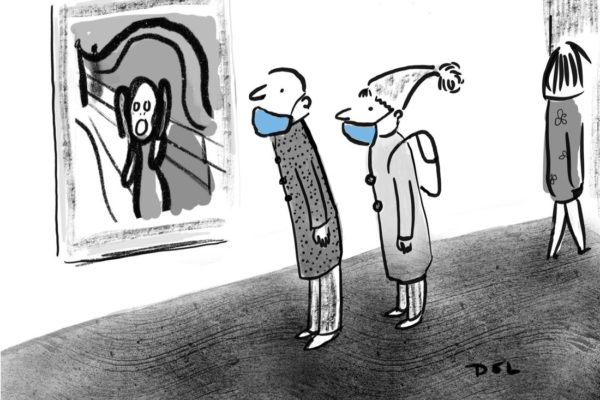Mindfulness and Exposure in Psychotherapy: Towards a Unifying Principle
It appears that the field of clinical psychology is maturing! As a scientific domain develops and matures, it tends to seek to explain the greatest number of phenomena using the fewest possible number of laws and constructs. This endeavor in the world of scientific philosophy is referred to as ‘parsimony”. So for example, in physics, possibly the oldest and most mature of the sciences, for some time now they have been chasing the “grand unification principle”; in which they have been able to contract two of the four laws of physics. Eventually, the hope is to have a “theory of everything”,…one law to explain all known phenomena in the quantum and standard realms. In psychology, which originally grew out of physics, there is a similar pursuit beginning to emerge.
Nearing the end of his long and illustrious academic career, Dr. David Barlow, professor Emeritus at the University of Vermont, has been the principal champion of this cause. He has proposed what he terms “The Unified Protocol for the Transdiagnostic Treatment of Emotional Disorders”. Essentially, he proposes a unified set of operational procedures to treat any emotional disorder whether it be depression, anxiety, obsessive-compulsive disorder, substance abuse, PTSD and so on. Following this approach, one does not need to use different methodologies to treat different disorders. His approach is derived from his lifetime of research that concludes the greatest predictors of favorable treatment outcomes regardless of diagnosis, derive from one’s ability to maintain emotional presence and mindfulness, openness and non-judgment to one’s emotional experience, and the ability to not avoid environmental cues that provoke difficult emotions and to be able to be exposed to difficult environmental cues and the co-arising emotions. So…in short, mindfulness and exposure are some of the most critical ingredients of a successful therapeutic endeavor, no matter what issues a client is presenting with.
About one year ago, I attended a symposium he presented at Binghamton University. Afterward, a number of folks who are familiar with my books and clinical approach stated humorously, something to the effect of, “So it appears Barlow read your books!” While I extremely doubt this, I was nonetheless delighted that folks so readily saw the overlap in our thinking in this matter. This is the general approach I have been using to train doctoral students in the Binghamton University psychology department for almost thirty years.
It has long been my contention that all forms of suffering and psychiatric symptoms are the byproducts of one’s biological inheritance and neuro-developmental factors, interacting with one’s tendency to avoid certain emotions and their conditioned (associated) environmental cues, combined with the failure to maintain attention in the face of these arising emotions. Symptoms arise as a direct and indirect expression of one’s inability to stay conscious and present in the face of emotional arousal, causing emotions to be expressed.
It should be pointed out that a unified protocol does not imply a “cookie cutter” protocol. Every client has specific and unique needs which arise out of their own personality, conditioning/learning history, bio-genetic predispositions, and so on. So no treatment is ever “one size fits all”. One can tailor treatments to a client’s needs while at the same time trying to ensure that one is helping to maximize exposure to avoided cues and their associated emotions while providing the client to maintain mindful openness and equanimity in the face of arising emotions and conflicts.
To be certain, psychology is as yet a long way from a true unification principle. But it is wonderful to see that the science is maturing to the point that the endeavor is even underway. Perhaps, a unifying theory has been with us all along. Increasingly, scholars in psychology and other disciplines, including physics are looking to the teachings of Buddha, some 2500 years ago. In laying out the nature and origins of all suffering, he has left us some very important clues as to where to look. Now perhaps, we can bring our modern methodologies and technologies to bear to better illuminate what has been known all along!





